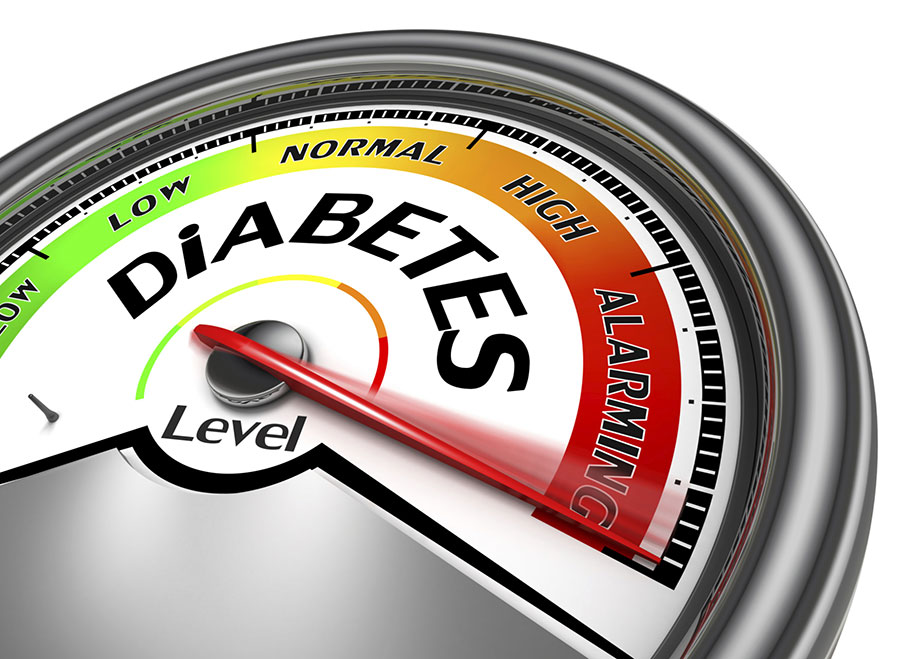Stop Diabetes Developing
A third of adults now have pre-diabetes, meaning millions are at risk of developing type 2 – but it’s never to late to take action, says Abi Jackson
Type 2 diabetes recently hit the headlines again, with major new research published in the British Medical Journal revealing that some 14 million people in England now have pre-diabetes, three times higher than figures from 2006.
Numbers are believed to be on the rise for the rest of the UK too, and experts are warning that lots of people may not be aware that it affects them. They’re also warning of an associated surge in type 2 diabetes rates.
This is nothing new. In 2010, it was revealed that more than a million Brits could already have undiagnosed type 2, with the overall number of diagnosed diabetes cases expected to rise from three million to more than five million by 2030 – the vast majority being type 2, the form linked with weight and lifestyle. (Type 1 has no lifestyle link and is instead believed to be caused by a fault in the immune system, which leads to insulin-producing cells being destroyed. It tends to first appear before age 40 and particularly during childhood, and makes up around 10% of all diabetes cases).
With type 2, insulin-producing cells are still present but they’re no longer producing enough insulin, or the insulin isn’t working properly, which wreaks havoc with the body’s blood glucose levels.
Both types are serious and can lead to major complications if not managed well, including blindness, kidney and nerve damage and amputation.
So what is pre-diabetes?
It basically means that your blood glucose levels have increased – but not quite enough that you officially have full-blown type 2.
The good news, though, is there’s a lot you can do about it.
“In about 80% of cases, we can prevent or delay type 2 diabetes,” says Libby Bowling, clinical advisor at the charity Diabetes UK (www.diabetes.org.uk).
“So I think a key message to get across to people is that we’ve coined this phrase, ‘pre-diabetes’, because it’s easy to understand, but it’s unfortunate that it gives the impression that it’s then inevitable that we will go on to develop full-blown type 2. “That’s not the case,” she adds. “Actually, it’s a bit of a wake-up call, if you like – you still have a lot in your power to prevent developing type 2 diabetes in full.”
So what can you do?
:: Knowledge is power
Understanding diabetes is the first step towards tackling it. This means being aware who’s at risk, taking steps to prevent it, and knowing how to manage it.
“Understanding type 2 is important because at least a quarter of us will develop diabetes in our lifetime, mostly after the age of 60. It’s not only common, but it also has the potential to shorten or ruin lives. However, type 2 diabetes and its complications are readily preventable,” says Professor Merlin Thomas, author of new book Understanding Type 2 Diabetes, which explores the subject in depth.
“It just takes clear understanding, good support, commitment and management, but it is possible.”
While it mostly occurs in overweight people aged over 40, type 2 can sometimes develop in younger age groups, particularly among South Asian people who are at higher risk. Symptoms include increased thirst, increased need to urinate, blurred vision, extreme tiredness and genital itching, but the condition can sometimes creep up with little warning, so if you are ‘at risk’ ask your GP for a test.
Want to find out more? Books like Thomas’ are a great reference point, while the Diabetes UK website is packed full of information. You can also speak to your GP or practice nurse, or Lloyds Pharmacies nationwide offer free diabetes advice services (www.lloydspharmacy.com/en/
:: Eat a sensible, balanced diet
“If you have pre-diabetes, you are about 10 times more likely to get type 2 diabetes in the next five years,” notes Thomas. “But although your risk of diabetes is increased, this also means the benefits of lifestyle and diet interventions are much greater.”
In fact, the same lifestyle adjustments that can prevent type 2 are also crucial to managing it (while some may require medication, even insulin injections, sometimes lifestyle changes alone are enough), and may in some cases “get rid of” it altogether.
And eating well needn’t be too confusing or unattainable.
“It really is as simple as following a healthy, balanced diet, and by that we mean a diet that is low in fat, salt and sugar and having at least five portions of fruit and vegetables a day,” Bowling explains. “The other thing, of course, is portion sizes, because that’s a key part of managing your weight.”
Eat regular meals throughout the day, rather than fasting and then having one big meal, as this will help balance out your energy levels. There are lots of recipe ideas and useful diet tips on the charity’s website.
And remember, you can still enjoy the occasional treat. “The key is that we say ‘low’ fat and sugar, not ‘no’ fat and sugar. So that doesn’t mean you can never eat treat foods, you just need to be careful about how much you’re having and how regularly you’re having them,” says Bowling.
Allowing yourself an occasional treat may help you achieve a healthy diet for life, rather than being stuck in the “all or nothing” trap.
:: Be active
“Keeping physically active can help in either maintaining your weight, or losing weight if you’ve got weight to lose,” adds Bowling.
Weight control is a vital factor in preventing and managing type 2, but being active plays a wider role too. Moving your limbs, getting your heart pumping and your blood flowing all help keep the body in good working order, preventing complications and generally bringing about a sense of motivation to look after yourself and control over your condition.
But don’t be put off by thinking that you’re not capable of exercise. “The Department of Health recommends 30 minutes of moderate physical activity on five days of the week,” says Bowling. “That means something that makes your heart beat a little faster and makes you a little breathless but you can still hold a conversation. People often automatically think, ‘Oh, I have to go to the gym’, but there’s a lot you can do – a brisk walk, the gardening, playing with the kids, running up the stairs. And you don’t even have to do the 30 minutes all in one go; it could be a 15-minute walk to and from work, instead of getting public transport.”
If you have mobility difficulties or any type of disability or illness which may make taking part in exercise trickier, ask your doctor or nurse for advice. Are there classes or fitness facilities in your area you could join? (Websites like www.efds.co.uk/inclusive_
:: Give yourself a helping hand
Sometimes, drugs and medicines are unavoidable. But, generally, we could all benefit from looking at our lifestyles overall and considering how things might be impacting our health. This includes prioritising sleep, reducing stress and factoring in time for relaxation and leisure to keep our batteries charged.
Alcohol and smoking are not directly linked with type 2 diabetes, but it’s still worth taking a sensible approach, which means drinking in moderation and not smoking. “Alcohol can be high in calories, so if you drink a lot, you may end up putting on weight,” notes Bowling. “And smoking is linked with high blood pressure, and having high blood pressure increases your risk of type 2.” Boozing too much and smoking could also lead to other problems and impaired circulation, both of which won’t do you any favours if you do develop diabetes.
What experience do you have of Type 2 Diabetes?
Latest posts by Sally - Silversurfer's Editor (see all)
- Pocket money memories - March 14, 2025
- Belton Farm Red Fox Mac and Cheese Croquettes - March 11, 2025
- Downsizing & decluttering: A guide to simplifying your life - March 11, 2025
- Make your roof work for you: The smart way to save with solar - March 10, 2025
- Top five Fred. Olsen Cruise Deals - March 10, 2025




















